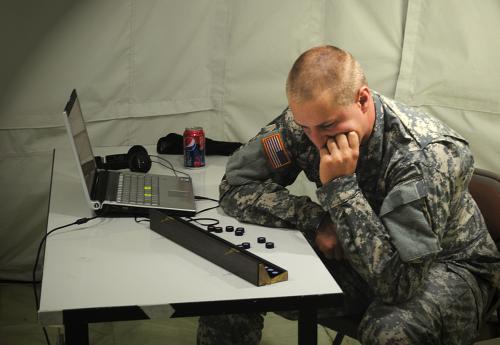Soldiers are constantly performing critical tasks and making decisions that could result in life or death. For this reason, it’s important that they maintain awareness of their situation and are able to make timely and correct decisions in order to optimize performance and keep everyone safe.
In the past, there has been a lot of research on the effects of lighting on humans. It can affect alertness, sleeping patterns, or productivity. Yet, lighting has rarely been studied in military applications. Soldiers set up maps, have meetings and conduct mission planning in tents that are currently lit using fluorescent lights According to a press release, researchers at the Natick Soldier Research, Development and Engineering Center (NSRDEC) are investigating the effects of fluorescent light vs. LED lights on soldiers’ mood, affective state, visual acuity, cognitive alertness/awareness and the ability to perform tasks.
The Shelters Team and the Special Projects Team were analyzing three LED systems to replace the fluorescent lights. The systems were analyzed based on technological differences, such as longevity and installation time, but the new project tests the effects on the soliders. Breanne Haws, a member of the Cognitive Science Team, says the ultimate goal of the research project is to develop more efficient spaces that promote well being for soldiers.
The lighting is being studied at a number of different Kelvin color temperatures, ranging from low color temperatures (yellow/red) to high color temperatures (blue/white.) Twenty-four soldiers between the ages of 18 to 31 participated in the study, which took place at NSRDEC during five consecutive days.
The NSRDEC researchers concluded that LED lighting fostered a positive mood, increased alertness, and resulted in faster performance on visual perceptual and cognitive tasks. Soldiers working under fluorescent lights typically felt less alert, more fatigued and more depressed over time. They also demonstrated slower response times on cognitive tasks.
Property managers and electrical contractors generally focus on energy efficiency, maintenance costs, and lifetime of the fixtures, but research projects like this demonstrate how different types of lighting affect how we operate. Fortunately, the lighting that is energy-efficient and requires minimal maintenance also seems to be beneficial for our mood, alertness, and performance.
Photo Source: NSRDEC Public Affairs



